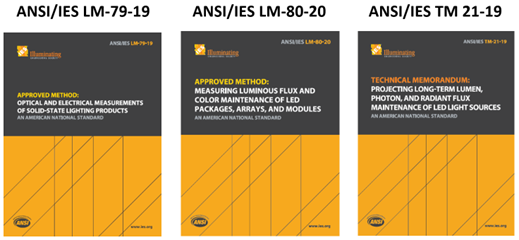
We are a leading manufacturer of quality internal and external lighting products for commercial, industrial and retail applications.
View all productsAt Ansell Lighting we design and manufacture an extensive range of luminaires for a diverse number of sectors and applications. Whatever the shape, purpose or style of your space, we have a lighting solution.
View all sectors & applicationsWe are a leading manufacturer of quality internal and external lighting products for commercial, industrial and retail applications.
Welcome to Ansell lightingWe are here to answer any questions you may have, help you find a stockist or speak to a local member of our team.
OCTO delivers the complete smart lighting package to transform the efficiency and ambience of commercial and residential spaces.
Find information regarding our product warranty, product data downloads and FAQs regarding lighting and technical terms. Here you will find support with training CPDs as well as useful lighting design and LED strip calculators.
Interactions between LM80 and TM21

For many it is somewhat important to have a basic understanding of the difference between these three standards, because they are all used to determine the performance metrics of LED light sources.
Let’s use this editorial to consider each of the documents on an individual basis, as I am sure that it may be easy to get confused by the three different standards of LM-79, LM-80 and TM-21, where it may be assumed that they offer the same measurement of testing LEDs, but unfortunately, they do not, and whilst they might work together, they do not in any way provide related measurements.
In attempting to consider the terminology used for the document’s names, where each starts with ANSI, which is the ‘American National Standards Institute’ and followed by IES which is for the ‘Illuminating Engineering Society’. There are two different termed names for the documents, where LM being for ‘Lighting Measurement’, as in that of LM-79 and LM-80, with TM being for ‘Technical Memorandum’ as in that of TM-21.

With the names of the documents now being understood, the next consideration relates to terminology, in that there is an ‘LED Package’ and an ‘LED Array’ or ‘LED Module’. An LED Package is an assembly of one or more LED dies which includes wire bond or other type of electrical connections, possibly with the addition of optical and thermal elements as well as mechanical and electrical interfaces, whereas an LED Array or LED Module is an assembly of LED packages (components), or dies on a printed circuit board or substrate, possibly with optical elements and additional thermal, mechanical, and electrical interfaces that are intended to connect to the load side of a LED driver.
Hopefully that offers clarification on the different documents and shown above, is an image of the front cover of each document, together with a brief outline of their content which is given below.
ANSI/IES LM-79-19
An American International Standard providing the ‘Approved Method: Optical and Electrical Measurements of Solid-State Lighting Products’ (with this document being a revision of IES LM-79-2008). LM-79-19 is an approved method for taking electrical and photometric measurements of Solid-State Lighting products and describes the procedures to be followed and precautions to be observed in performing reproducible accurate measurements of (1) total luminous, radiant, or photon flux, (2) electrical power, (3) system efficacy, (4) luminous, radiant, or photon intensity distribution, (5) colour quantities and or spectrum of solid-state lighting (SSL) products for illumination purposes. These are conducted under standard conditions and this approved method covers LED luminaires, integrated LED lamps and non-integrated LED lamps operating through a driver.
ANSI/IES LM-80-20
An American International Standard providing the ‘Measuring Luminous Flux and Colour Maintenance of LED Packages, Arrays, and Modules’ (with this document being a revision of IES LM-80-2008). LM-80-20 is a standard which defines how the lumen output and colour shift of LEDs should be measured over time and at different temperatures, and the document is important to lighting designers, specifiers and to lighting manufacturers as it provides a standard method of testing LEDs and then presenting the test results, so that the data from a range of products being tested by one manufacturer can be directly and objectively compared, with that of similar products from other competing lighting manufacturers.
The standard of LM-80 is concerned with measuring two of the most important aspects of LED quality, that of ‘Lumen Depreciation’ and of ‘Colour Shift’. For Lumen depreciation, it is known that during the lifetime of LED’s, the lumen output, referred to as being the luminous flux gradually decreases, which means that the light source produces less light, with the temperature of the LED being critical, as the rate of that lumen depreciation takes place much more rapidly with LED’s operating at a higher temperature that those at lower temperatures, as well as varying between different types and wattages of LED and also between different manufacturers. For colour of light, it is known that an LED emits changes which is termed as being colour shift or chromaticity shift, where LEDs used as a white light source, may change colour during life towards either the red or the blue end of the electromagnetic spectrum, and where this change occurs more rapidly at higher operating temperatures.
It specifies a minimum testing period of 6,000 hours, although 10,000 hours is preferred for the purposes of improved predictive modelling and requires testing at a minimum of 1,000-hour increments. LM-80 provides no determination or estimate of expected life or lumen maintenance beyond the test data, which, even with 10,000 hours of testing, falls well short of the many claimed lifetimes of most Solid-State Lighting products on the market today. This approved method does not provide guidance or make any recommendations regarding predictive estimations or extrapolation for lumen maintenance beyond the limits of the lumen maintenance determined from actual measurement.
ANSI/IES TM 21-19
An American International Standard providing the ‘Projecting long-term Lumen Photon, and Radiant Flux Maintenance of LED Light Sources’ (with this document being a revision of IES TM-21-2011). TM-21 does not determine the accepted life or the time to failure of an LED light source as this requires consideration of the many components contained within the system, such as LED package and die degradation, secondary optics, PCB board failure, heat sink performance, LED Drivers and fitting housing, however TM-21 does provide the IES recommended method for projecting the lumen degradation of an LED package, array, or module forward beyond the test period, and which is based upon data obtained from the testing procedure contained within ANSI/IES LM-80-20. As such, both LM-80 and TM-21 are designed to work together, with TM21 using the LM-80 data, along with the temperature performance data, to project the lumen maintenance of an LED light source beyond that of the test for projecting useful LED lighting product life at realistic operating temperatures.
In a typical example, if the depreciation at 10,000 hours is stated as being 6%, then this means a 94 % maintenance of light output. Based upon the depreciation values at each 1000 hours of operation, the calculation method detailed within this document is used to predict the lifetime of an LED based upon a calculation up to a maximum of 6 times the period of measurement, where generally, luminaires are declared as being L90, L80 or L70, where the ‘L’ is the lumen maintenance given in percentage terms related to that of the initial lumens being achieved in a test.
CONCLUSION
In concluding, the standards of ANSI/IES LM-79-19, ANSI/IES LM-80-20 and ANSI/IES TM21-19 are documents which list the recommendations on the assessment of the maintenance of the luminous flux for LED-based lighting, where LM-79 is an approved method for taking electrical and photometric measurements of SSL products which covers total flux or light output, with TM-21 and LM-80 having been designed to work together, where TM-21 uses the test data provided by LM-80, alongside data obtained elsewhere.
You Might Also Be Interested In...

